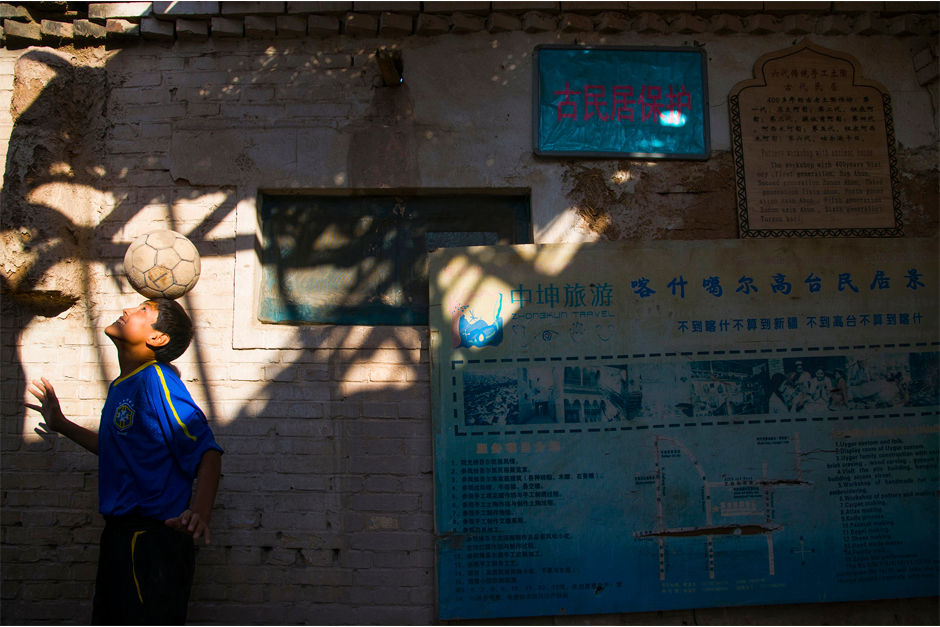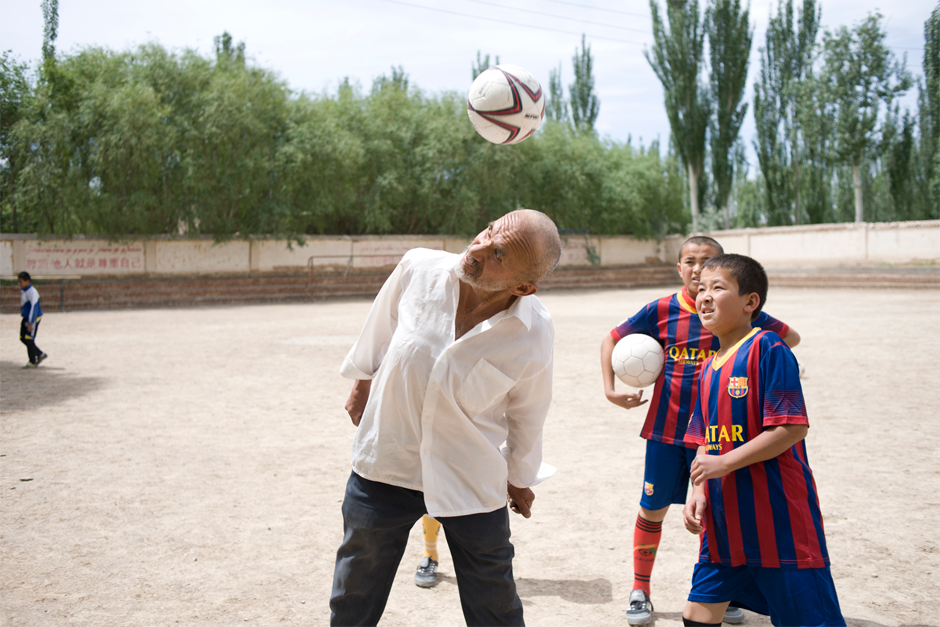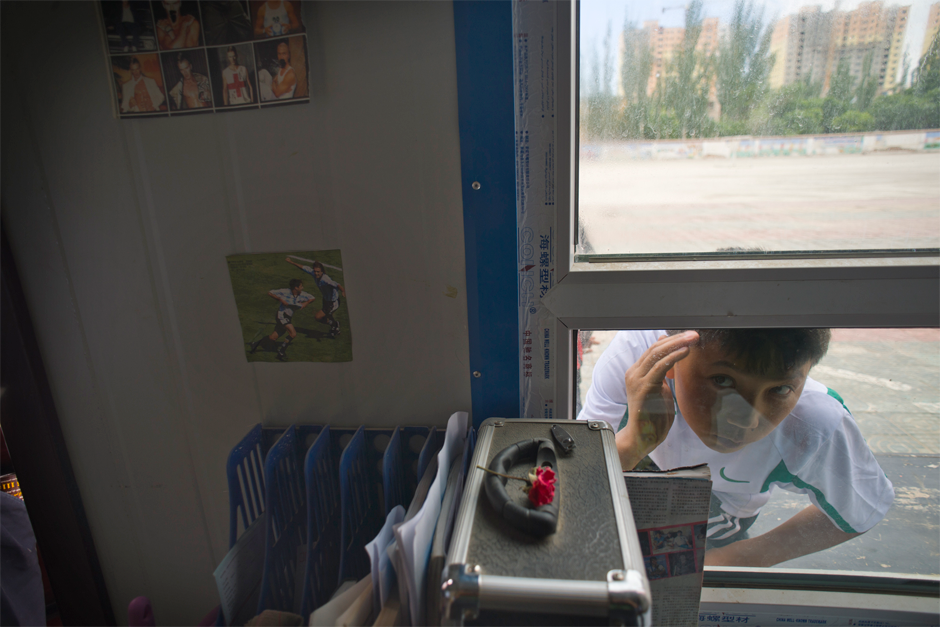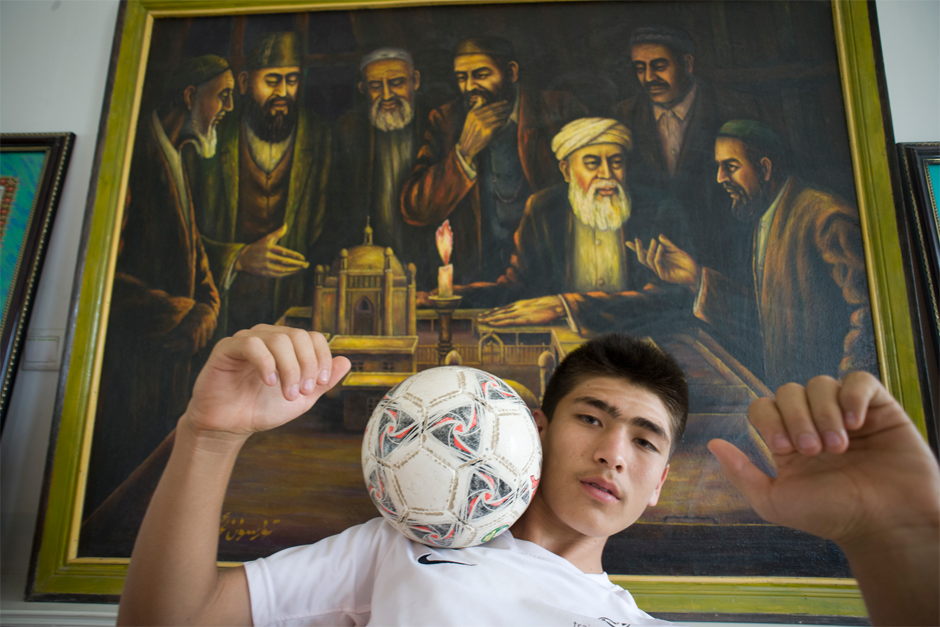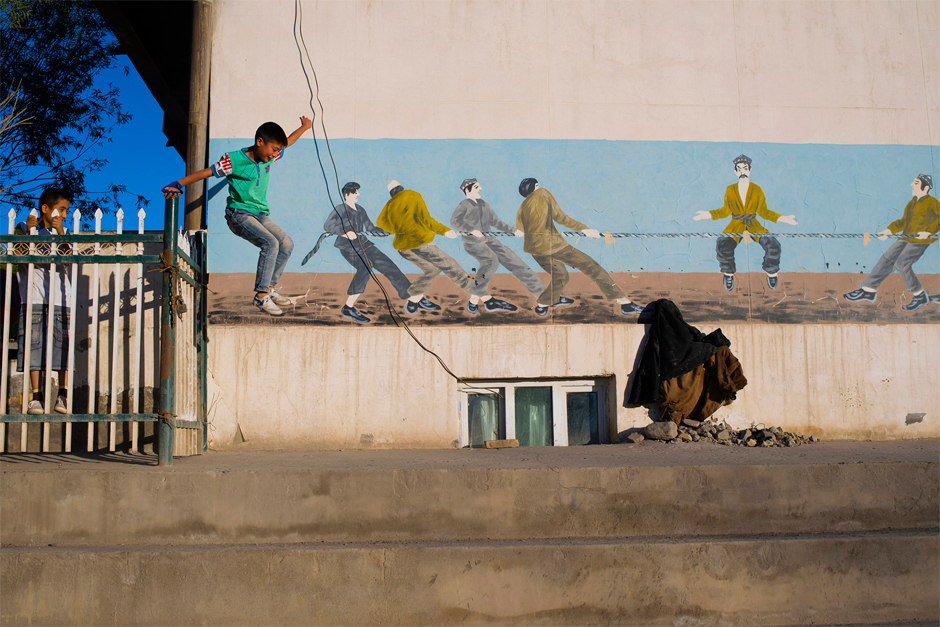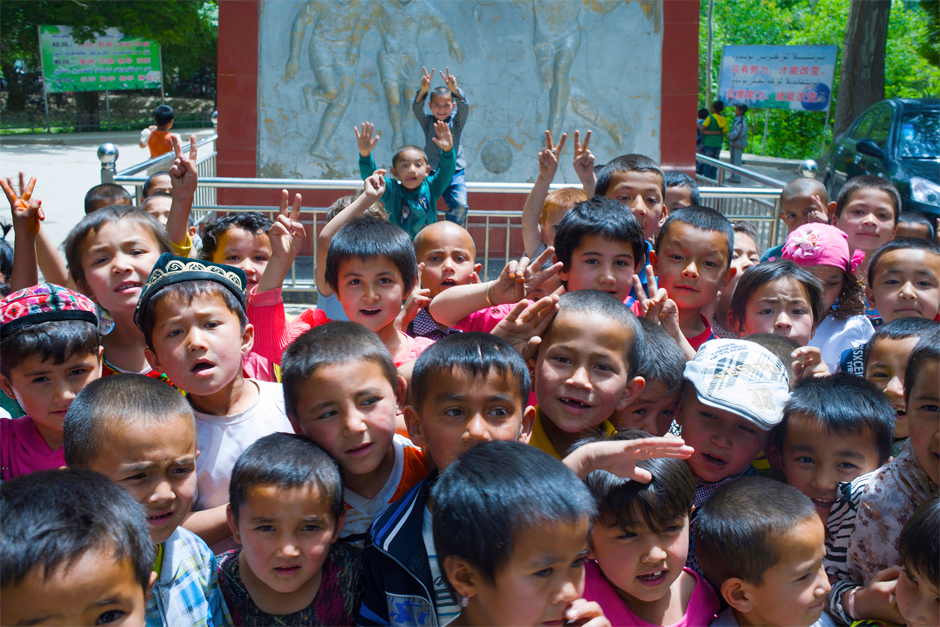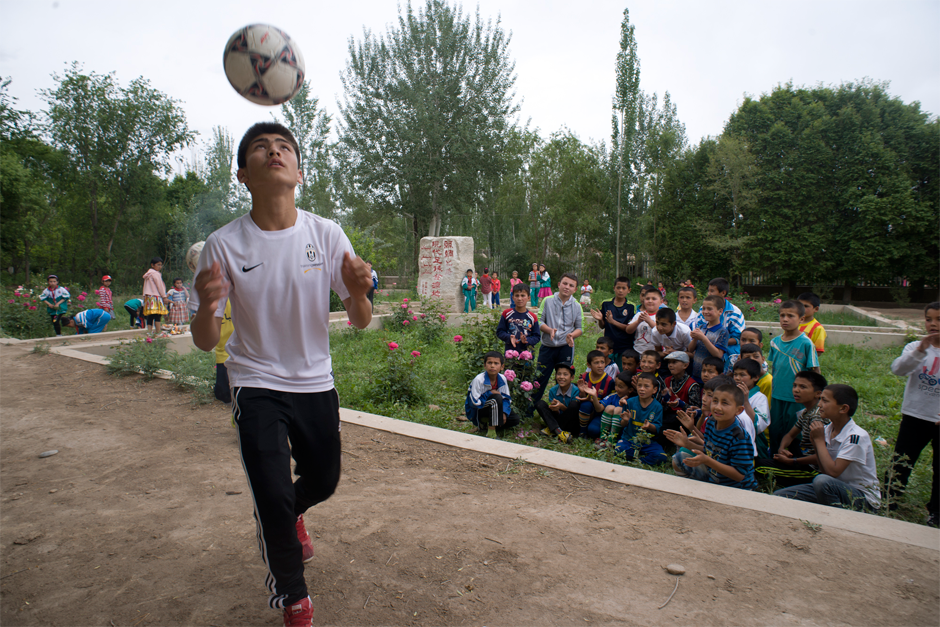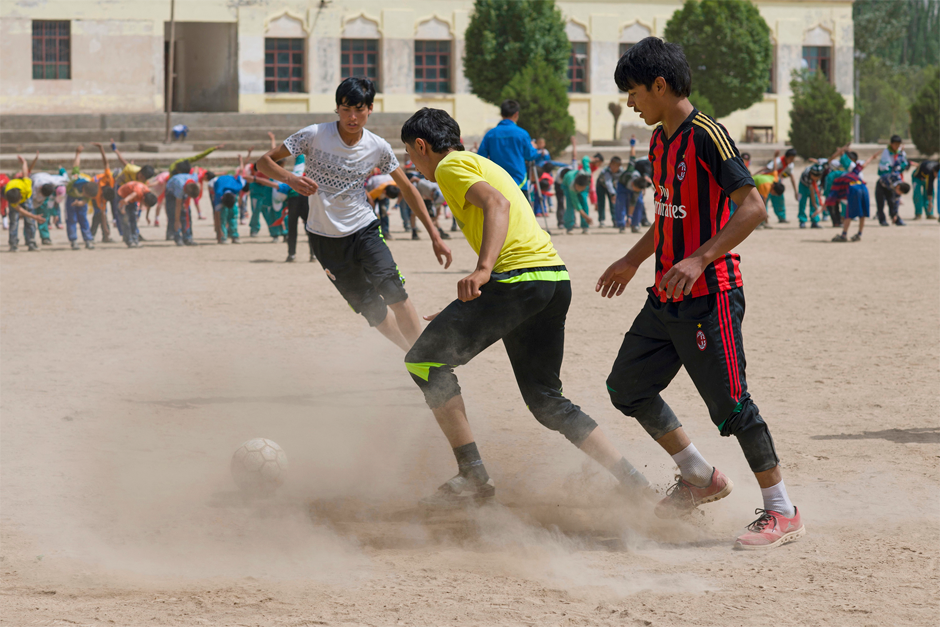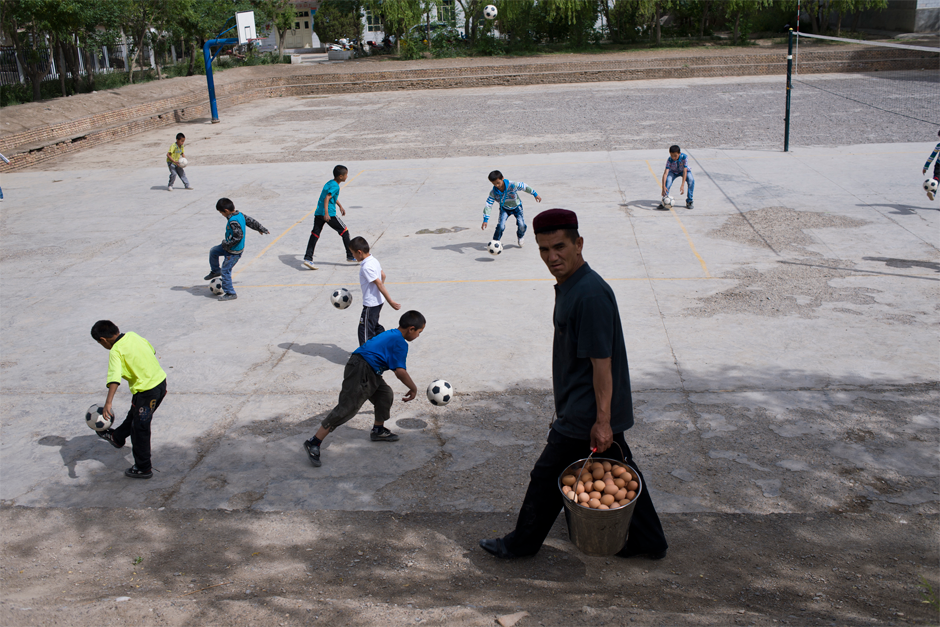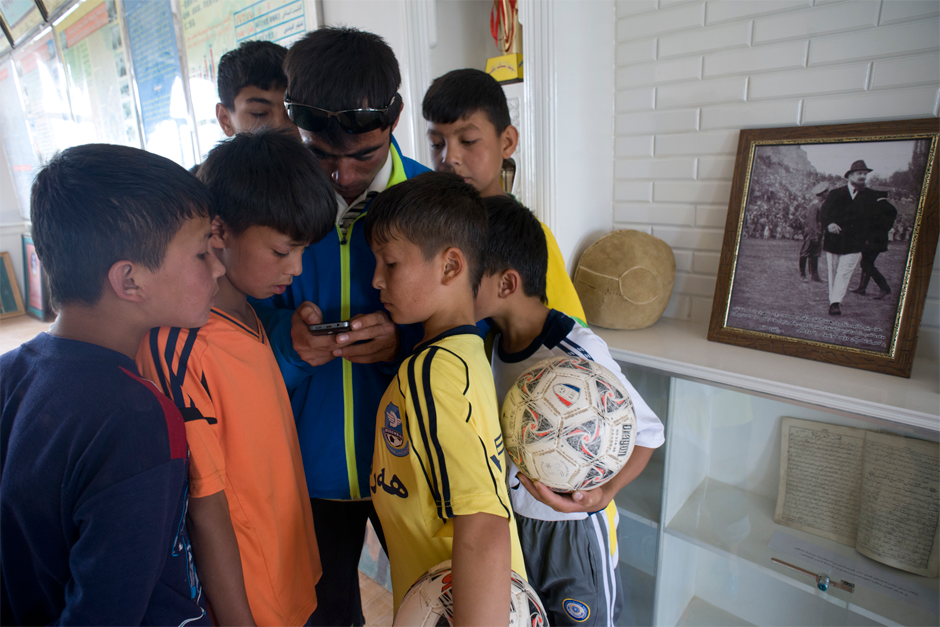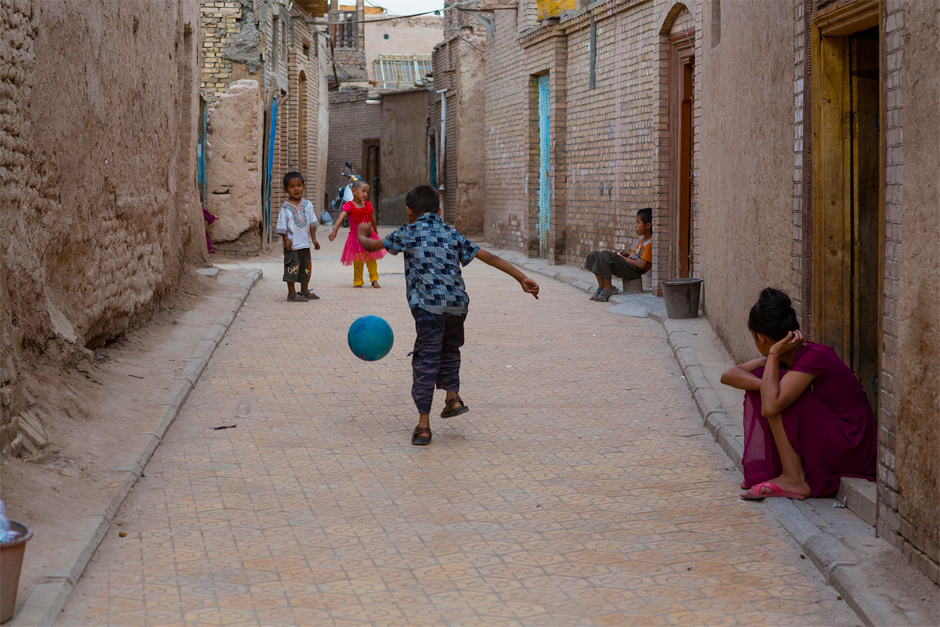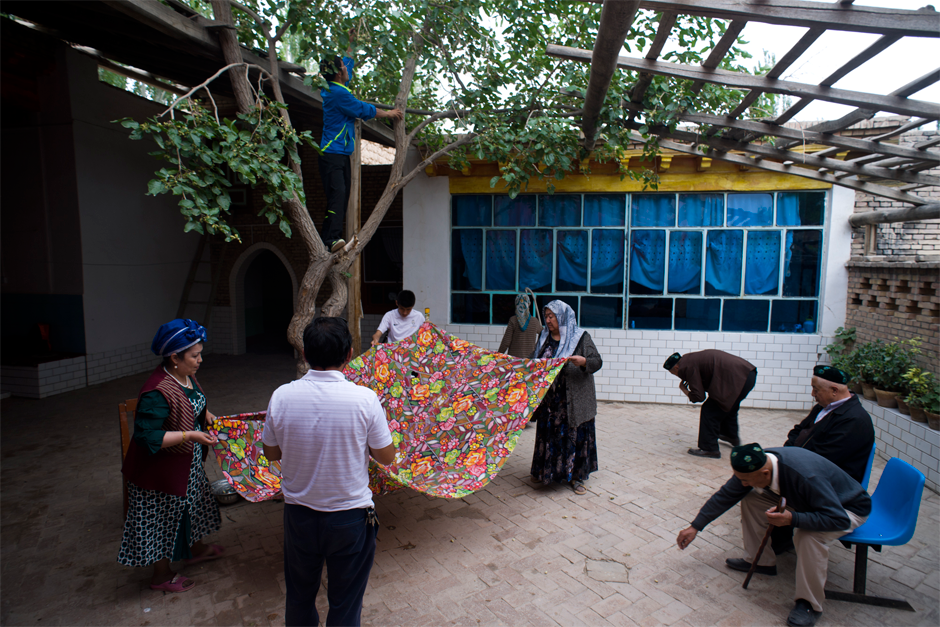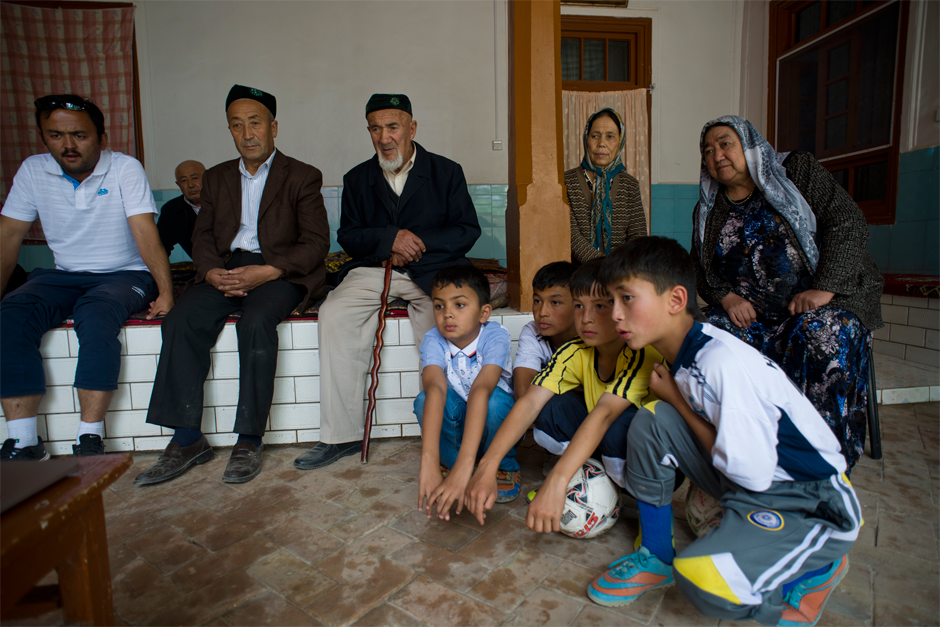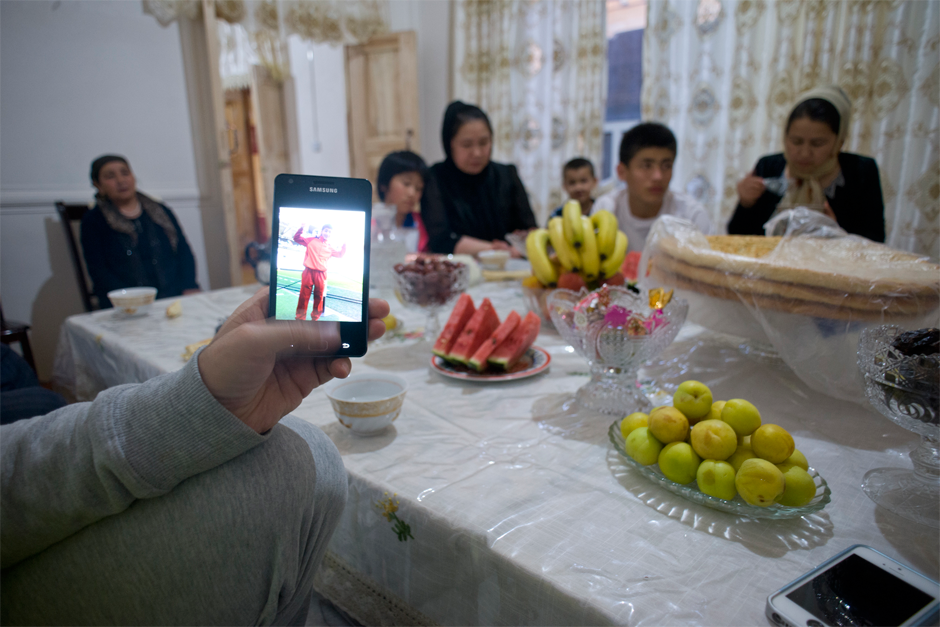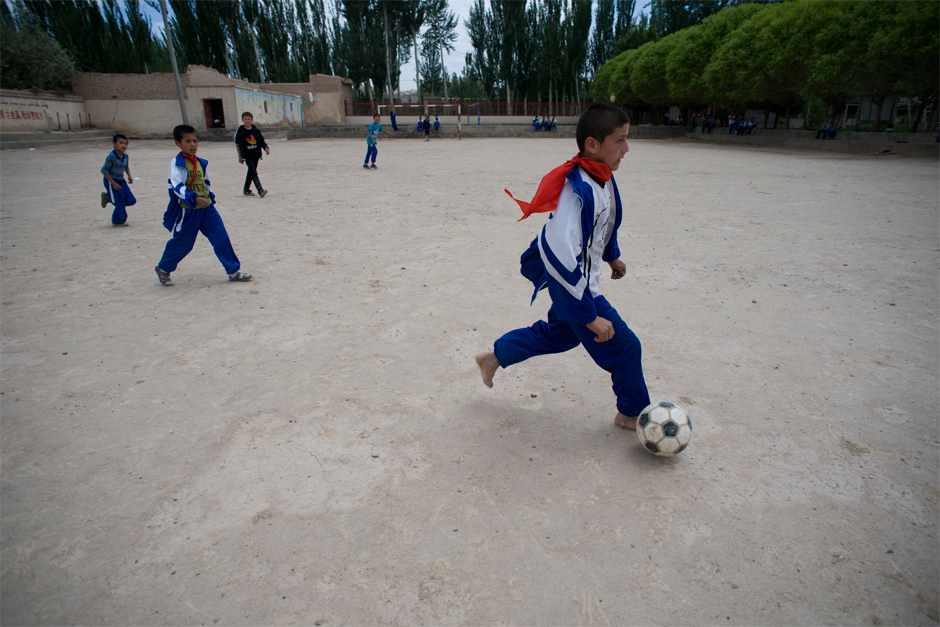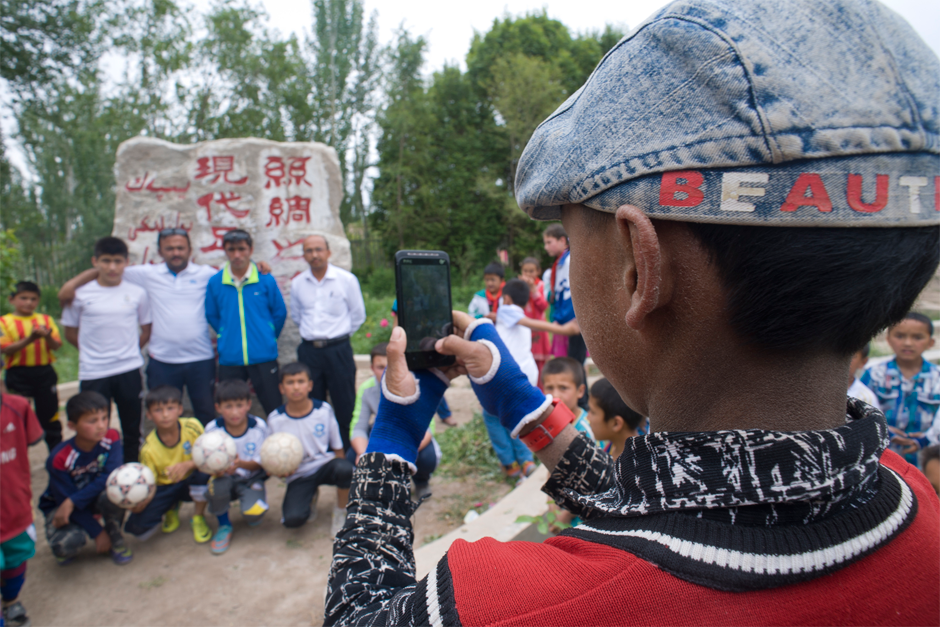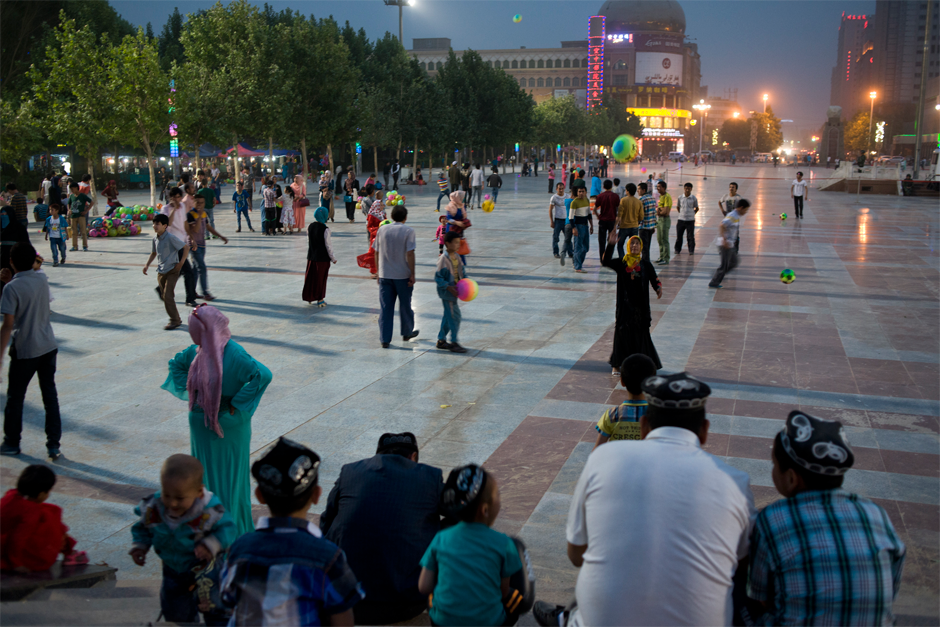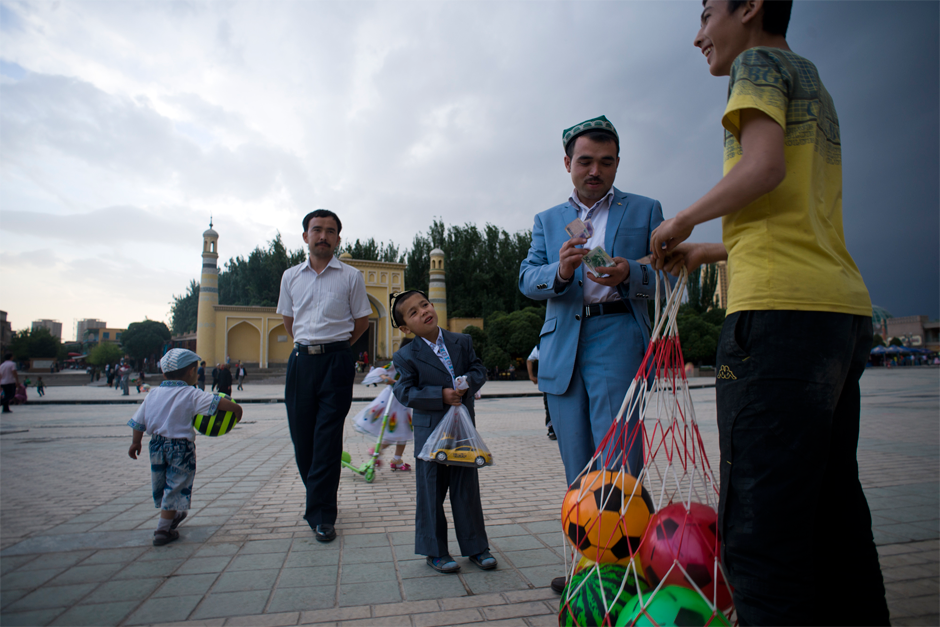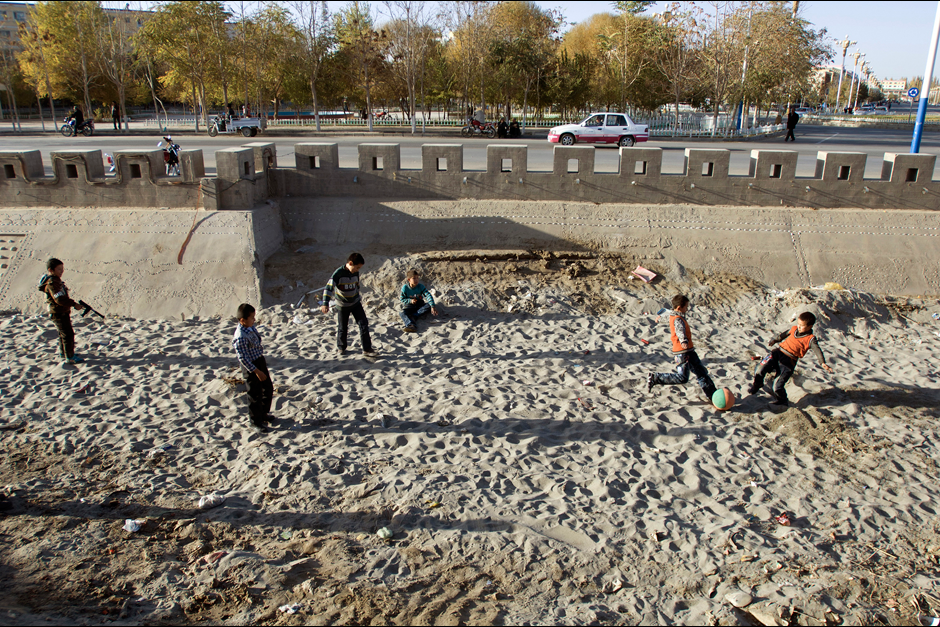Soccer on the Silk Road
How the ‘Beautiful Game’ Came to Xinjiang
As the World Cup draws to a close, we present a photo essay by Chinese photographer Zhang Xinmin exploring the game of soccer along the Silk Road in Xinjiang, where it has a special place in Uighur education and culture. China’s forays into international soccer competition have been disappointing, at best. But, as Zhang explains below, a new generation of Uighur players traces its passion for the sport to forebears who played matches after evening prayers with hand-sewn sheepskin balls and, in celebrated contests in the 1920s, vanquished their European competitors. His photographs first appeared, last month, on the Chinese website Tencent. What follows are translated excerpts from Zhang’s introduction.
* * *
It’s a clear, sunny day in Iksak, a small town surrounded by orchards outside the city of Artux in Xinjiang Uighur Autonomous Region. Iksak Elementary School’s 389 students are finishing up lunch in the noisy cafeteria. Afterward, many rush excitedly to the soccer field, where boys and girls alike vie for the ball, kicking up dust beneath the blazing sun. During the 10-minute interval between classes, children play ping-pong near the front entrance and tootle on wind instruments in the hallways; a few girls shimmy to music blaring out of a CD player.
The kids on the field might just look like they’re blowing off steam. But there is a unique educational tradition here in the Uighur-majority prefecture of Kizilsu, Xinjiang—and soccer plays a central role in it. For the residents of Artux, Kizilsu’s crowded border city and once a key stopover on the Silk Road, trade and travel have always been an important part of life. During their travels, traders from Artux witnessed innovations in education and science abroad and began to found schools back home. In 1872 the brothers Hussein and Bawudun Musabayov devised a new curriculum for the madrassas of nearby Iksak, one that merged religious and scientific education. Soon, they sent observers to Europe to study soccer, and the sport became a requirement at their schools. In 1885, in a break with the conservative Islamic establishment, they founded a school focused on modern science, offered free education, and hired foreign instructors to teach subjects including medicine, fine arts, accounting, and Russian. The school featured a state-of-the-art soccer field. Graduates of its teacher-training program went on to teach throughout Xinjiang.
Soccer training at the new school in Iksak was a hit, and soon the villagers, young and old alike, became passionate fans and players of the game. In May 1927, the British Consul in nearby Kashgar invited Iksak to send a team to play a match at the consulate. The British team members, all hailing from the sport’s birthplace, took it for granted that they would win and declared haughtily: “If you win the match, we’ll give you a stallion with a golden saddle.” To which Tursun, the captain of the Iksak team, replied that the villagers would give the British team two horses if they lost. In the end the motley team from Iksak, made up of farmers of all different ages, traveled to Kashgar in oxcarts and beat the British 2 to 1. They went on to a rousing victory over a group of Swedish missionaries, winning 7 to 0.
One of the team’s members was the father of Memet Zunun, now 85, of Iksak. Memet remembers how when he was young, the Iksak villagers played with a real soccer ball only during matches. In practice they used homemade balls sewn from sheepskin. Before the Communist Revolution, every Friday after prayers, the villagers would gather at the soccer field, separate into three groups based on age, and face off against each other, young people and white-bearded oldsters alike playing soccer till sundown while the whole village watched.
Today soccer remains a part of the curriculum at Kizilsu’s Third Elementary School. Every day, Coach Nasrulla Mijit oversees three teams as they practice on the school’s concrete soccer pitch. Nine of his students have gone on to the prestigious Evergrande Football School in Guangdong province, and five of them are champion players. His former student Imran, who was accepted to the Evergrande school two years ago and is now going on 15, recently spent a month in Italy training with the football club Juventus and will likely compete in the National Games in Guangdong three years from now. On a trip back to Kizilsu to visit his father, who is recovering from heart surgery, Imran brought Nasrulla, his former coach, the autographs of several famous Italian soccer players and accompanied him on a tour of village elementary schools to talk to the young students. Imran was particularly moved when they arrived in the village of Iksak, where the local elementary school is home to a small stone monument that reads: “Birthplace of Modern Soccer on the Silk Road.”




